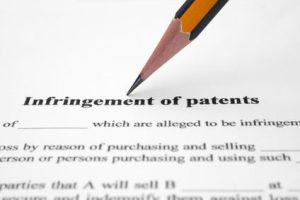
Prior to 1996, juries had to blindly navigate their way through the patent language and try their best to interpret its meaning. But this all changed during the Markman v. Westview Instruments, Inc. During this case, the jury no longer worked to interpret the patent language. Instead the judges took on the responsibility to define key patent terms for the jury. By defining the key terms in patent languages, judges were able to uniform patent language for the jury so that there was less confusion. Since this case, judges will now conduct what they refer to as Markman hearings to define key patent words for each patent infringement case. During the hearing both parties have the opportunity to persuade the judge to use their definition of the key words. Once the key words are decided by the judge, the jury can deliberate over patent case.
Another case that was instrumental to the judges’ decision process on patent infringement was the Graver Tank & Manufacturing Co. v. Linde Air Products Co. case in 1950. In the Graver Tank & Manufacturing Co. v. Linde Air Products Co. case, the Supreme Court came up with a two method process to determine whether a violation was committed. The first method determines whether the invention was completely duplicated. If two inventions operate the same in the same manner and produce the exact end results, than they are the same invention even if their exterior designs are different from one another.
The second method pertains to when existing inventions are enhanced. For instance, the first cell phone was tremendously enhanced with innovative technology creating the modern smartphone. The technology added to the original invention is an enhancement to the existing patent. Judges needed a way to determine whether an enhancement merited its own patent or if it was simply infringing upon the original patent. They determined during this case the method that if a change were minor or insignificant, then it did not constitute as an enhancement and was therefore violating the patent.
With the help of these two cases, judges and jurors now have a guideline for reviewing patent infringement cases. Markman and Graver Tank helped shape the U.S. patent infringement ruling process.

